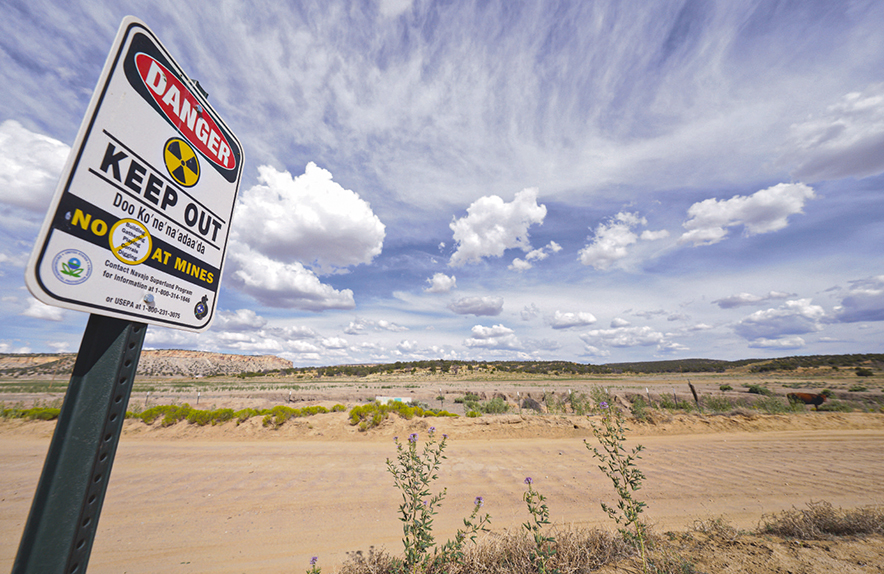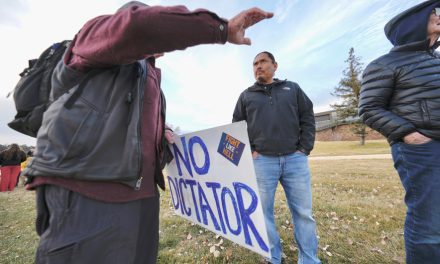
46 years later, Diné communities still battle uranium fallout

Special to the Times | Donovan Quintero
A warning sign in English and Diné Bizaad marks the boundary of a contaminated uranium site near Red Water Pond Road. More than 500 abandoned uranium mines remain across the Navajo Nation, many still awaiting cleanup.
CHURCH ROCK, N.M.
The Navajo Nation Environmental Protection Agency is pursuing an ambitious strategy to clean up the toxic legacy of uranium mining, even as tribal leaders and community advocates continue to demand justice, protection of sacred lands and accountability for decades of environmental harm.
At the center of this strategy is the Navajo EPA’s interest in deploying high-pressure slurry ablation technology to remove and treat radioactive waste from abandoned uranium mines scattered across the reservation. The method, originally developed for mining operations, is now being adapted for environmental remediation.
“So our own statute makes it a requirement of the Navajo EPA to seek out and apply available treatment technologies,” said Stephen Etsitty, the Navajo EPA director, “and we have that with the advent of high-pressure slurry ablation technology, which did come from a mining use initially. But now we’re looking to apply it to remediate your abandoned uranium mine waste.”
Etsitty explained that the technology could reduce the danger and amount of waste while also preventing radioactive materials from leaching into groundwater.
“We want to use this technology if it is going to be helpful at reducing toxicity of the waste, reducing volumes and reducing the potential for remaining waste to leach into the groundwater,” he said. “One of the things that a lot of people like to take off the table is groundwater, because they say we live in an arid environment, but groundwater is so important that even though we live in an arid environment. We need to always be vigilant about how we can protect it.”
Tribal oversight faces limits along federal transport routes
But the cleanup effort is complicated by jurisdictional constraints. Uranium is currently being transported across Navajo lands through federal highways, where tribal authority is limited.
“There is uranium transport happening on the reservation, and there are a lot of reasons for that,” Etsitty said. “The number one thing is we could not stop it because the transport route is on a federal highway, and the USDOT, the federal government preempts states and tribes from enforcing or developing regulations that would be stricter than the U.S. Department of Transportation regulations.”
Despite this limitation, the Navajo EPA is inspecting each transport to ensure safety compliance.
“We are regulating, and we are inspecting each truck to make sure that they are safe, and they are indeed meeting all of the DOT standards. That’s the best that we can do,” Etsitty said. He added that more than 450 trucks had been inspected so far.
To read the full article, please see the July 24, 2025, edition of the Navajo Times.
Get instant access to this story by purchasing one of our many e-edition subscriptions HERE at our Navajo Times Store.








 Highway 264,
Highway 264, I-40, WB @ Winslow
I-40, WB @ Winslow